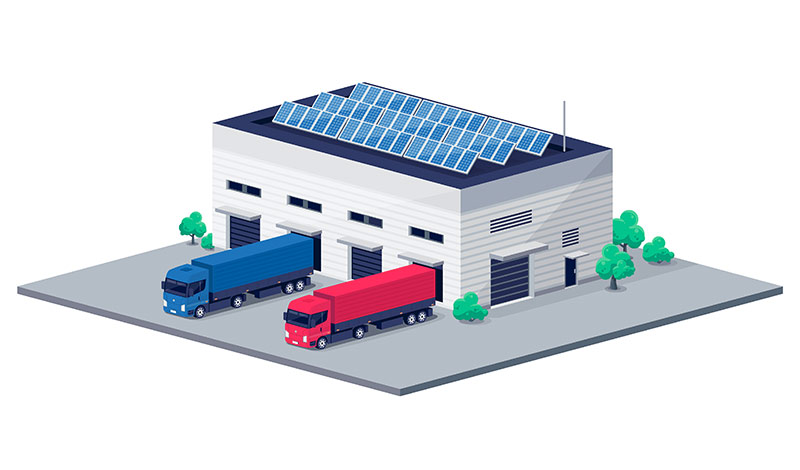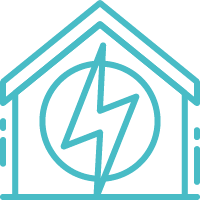Renewables Technologies for Commercial Buildings
Energy Costs are detrimentally affecting many organisations P&L.
We design, supply and install Solar PV for any business, as well as Public Buildings.
Focusing on both the efficiency of the system best suited to the building and available space, we seek to identify the most favourable Return On Investment (ROI), with a proposed Payback Period also factored into the system design.
With Commercial Energy Prices rocketing into 2023, business and public organisations can both reduce their energy costs, while ‘Hedging’ against future energy costs.

Which Renewable Technology Solution is best for your business? What solution will provide the best Return On Investment (ROI)?
There are now a number of renewable and low carbon technologies on the market which can make it difficult to choose the right renewable approach for your business. Should you go solar or opt for a heat pump in the office? What are the return on investment possibilities for each technology? Can you make a difference just by putting in better insulation?
It is important to take a holistic view of the energy consumption of your business, and to consider the most effective solutions, which may involve a combination of measures, for example from the following solutions:
Installing solar panels is often a great solution, so long as you have the roof space available (or even usable land space). The key is to survey the business site, and to design the most effective and appropriate solutions. With significant consideration to the optimal return on your investment that is potentially available to you.
In addition, businesses will be able to hedge against rising energy costs into the future, and as such, many businesses are introducing Commercial Solar as part of their operational budget.
As well as enhancing your business’s environmental credentials, we know that customers are often looking to companies that promote responsibility towards the environment.
Once you’ve installed your own renewable energy technology, you can sell the energy you produce back to the National Grid. If you are part of a Feed-In Tariff, any energy made via your own sustainable energy system can be sold back to energy suppliers.
But you won’t want just any Feed-In Tariff; you’ll want to find the best energy company for FiT payments. This doesn’t just mean how much you’ll earn. Often, what is the best Feed-In Tariff rate for one business, is not for another.
What is a FiT tariff?
FiT is a government subsidy which rewards businesses who create their own energy. With the introduction of the Paris Agreement and various other national and global environmental requirements. countries have had to look at ways to reduce their carbon footprint.
Other Solutions to consider:

Solar Thermal
The sun isn’t just good for producing electricity. Solar thermal uses the energy from our nearest star to heat up water. It’s a technology that is used across the whole of Europe by many businesses that are looking to reduce their costs and cut down on their environmental impact. Often considered a poor second cousin to solar panels, solar thermal is in fact a highly cost effective and easy to install technology that can bring numerous benefits.

Commercial Wind Energy
If your business has access to plenty of land and you want to take advantage of the renewable industry’s most recognisable product, then you might like to consider installing a wind turbine or two. Creating energy from the wind is not suitable for urban areas mainly because of houses that block the necessary air flow that a turbine needs and the impact on the view of residents. Whilst costing twice as much as a comparable energy producing solar panel installation, wind power can produce a significant return on investment for a commercial concern that has the land available.

Heat Pumps for Business
The sun isn’t just good for producing electricity. Solar thermal uses the energy from our nearest star to heat up water. It’s a technology that is used across the whole of Europe by many businesses that are looking to reduce their costs and cut down on their environmental impact. Often considered a poor second cousin to solar panels, solar thermal is in fact a highly cost effective and easy to install technology that can bring numerous benefits.

Heat Recovery and Ventilation
Heat Recovery and Ventilation systems have been around for some years but have developed dramatically with the renewable revolution and present an increasingly attractive proposition for many businesses. Most new office builds are starting to include heat recovery and ventilation systems as a matter of course but, as with heat pumps, older buildings have several other issues to overcome to make installation a viable option. Heat recovery can, however, greatly reduce the running costs of a business even with a retrofit, as long as the right system is put in place.
Curious to learn more?
We work with Home and Business Owners, Local Authorities, Managing Agents, Architects, and other industry stakeholders to support all carbon reduction programs.